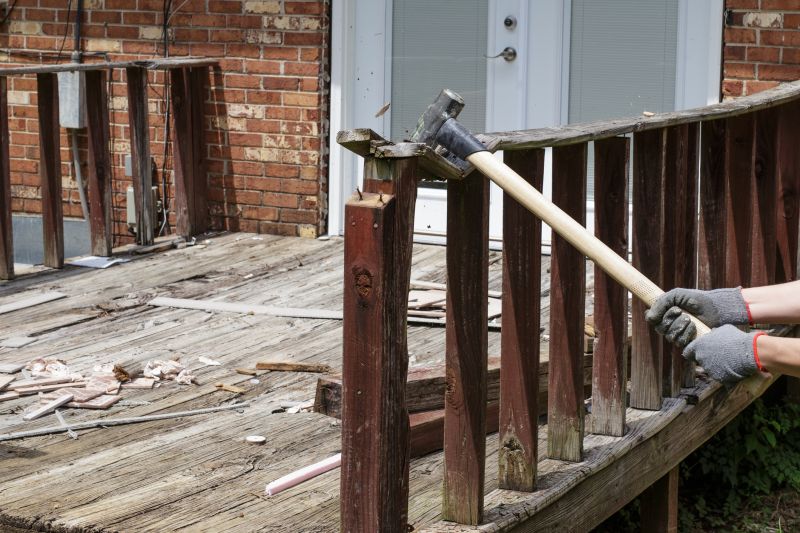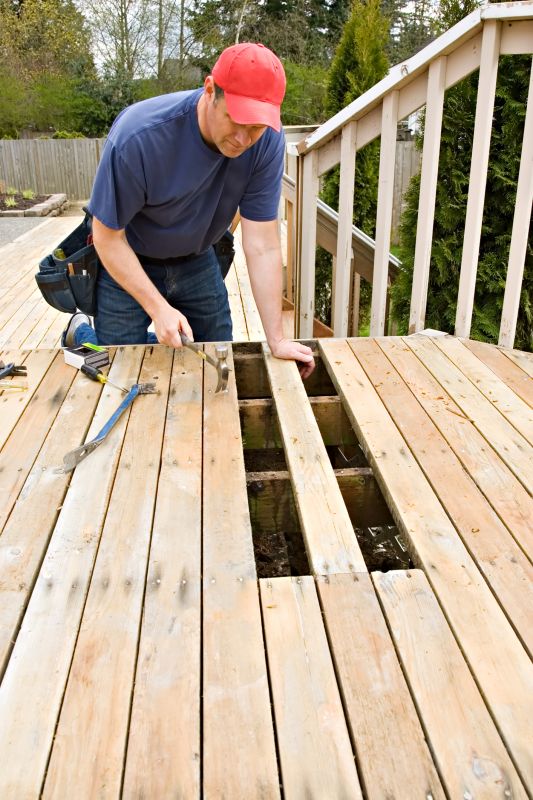Optimal Timing for Deck Analyses
Deck Analysises are most effective when conducted at key intervals to ensure optimal performance and safety. Proper timing allows for early detection of issues, prolongs deck lifespan, and maintains structural integrity. Understanding the ideal times for analysis can help property owners plan maintenance and inspections efficiently.
Conduct a deck analysis after construction to identify any structural issues or defects early on.
Perform analyses before peak usage seasons to ensure decks are safe and ready for frequent use.
Evaluate decks after severe weather events to detect damage or wear caused by storms.
Schedule yearly analyses to monitor deck condition and address potential problems proactively.

Ways to make Deck Analysises work in tight or awkward layouts.

Popular materials for Deck Analysises and why they hold up over time.

Simple add-ons that improve Deck Analysises without blowing the budget.

High-end options that actually feel worth it for Deck Analysises.

Finishes and colors that play nicely with Deck Analysises.

Little measurements that prevent headaches on Deck Analysises day.
| Timing Point | Key Considerations |
|---|---|
| Post-Construction | Ensure structural integrity after build completion. |
| Pre-Season | Verify safety before peak usage periods. |
| Post-Storm | Assess for storm-related damage. |
| Annual | Regular monitoring and maintenance. |
| Pre-Renovation | Evaluate existing structure stability. |
| Post-Repair | Confirm repairs meet safety standards. |
| Before Major Events | Guarantee safety for gatherings. |
| After Long-Term Exposure | Check for wear and aging effects. |
Deck Analysises involve detailed inspections and assessments of structural components, including support beams, joists, fasteners, and surface materials. Advanced techniques such as load testing, material analysis, and visual inspections help determine the deck’s ability to withstand current and future loads. Regular analysis can identify issues like wood rot, corrosion, or structural deformation before they become safety hazards.
Statistics indicate that decks undergo significant wear over time, with inspections revealing deterioration in up to 60% of structures after a decade of service. Conducting analyses at recommended intervals can reduce the risk of failure, prevent costly repairs, and extend the lifespan of the deck. Proper timing ensures that maintenance efforts are effective and that safety standards are upheld.

A 60-second routine that keeps Deck Analysises looking new.

A frequent mistake in Deck Analysises and how to dodge it.

Small tweaks to make Deck Analysises safer and easier to use.

Lower-waste or water-saving choices for Deck Analysises.

The short, realistic tool list for quality Deck Analysises.

Rough timing from prep to clean-up for Deck Analysises.

Quick checks and paperwork to keep after Deck Analysises.

Examples that show the impact a good Deck Analysises can make.
Interested parties are encouraged to contact for more information about scheduling Deck Analysises. Proper timing and regular assessments can contribute to the safety, longevity, and performance of deck structures.



